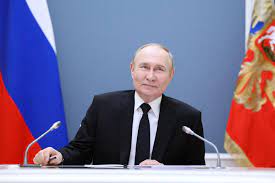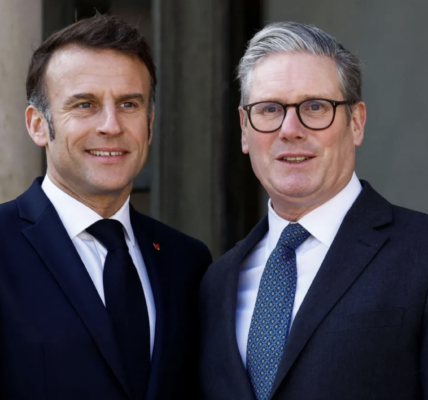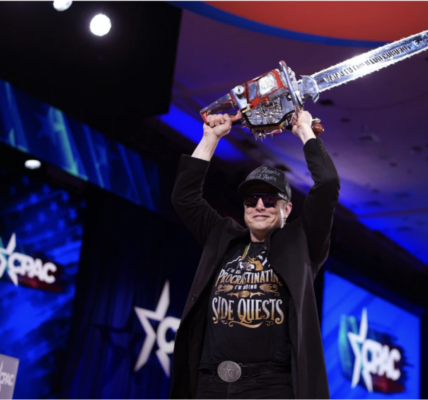
Vladimir Putin sets out conditions for Ukraine ceasefire.
Vladimir Putin has stated that while he supports the idea of a ceasefire in Ukraine, “questions” still surround the specifics of the truce. During discussions with the United States earlier this week, Ukraine agreed to a 30-day ceasefire plan, to which the Russian president was reacting.
The president of Ukraine called Putin’s reaction to the plan “manipulative” and called for additional sanctions against Russia. In the meantime, the US has imposed sanctions on Russia’s banking, gas, and oil industries.
According to Russian officials, Steve Witkoff, the special envoy of US President Donald Trump, had flown to Moscow earlier that day and was expected to meet with Putin Thursday night to discuss the ceasefire.
It is unclear whether that meeting happened. According to Flightradar, an air traffic monitor cited by Russia’s state media on Friday, the plane thought to be carrying Witkoff has departed Moscow. Washington and Moscow have refrained from commenting on the matter.
Russia and Ukraine both reported fresh enemy drone attacks late Thursday and overnight. According to Putin, a ceasefire should bring about “an enduring peace and remove the root causes of this crisis.”
He stated, “We need to negotiate with our American colleagues and partners.” “I might give Donald Trump a call.”
Putin went on: “A 30-day ceasefire will benefit the Ukrainian side. “There are nuances, but we are in favor of it.”

Putin sets terms for the ceasefire, Ukraine must pull out from annexed parts.
According to Putin, one of the points of contention is the Kursk region in western Russia, where Ukraine launched a military invasion in August of last year and took some territory. He asserted that Ukrainian forces in Kursk “have been isolated” and that Russia had regained complete control of the city.
“We are in charge, but they are attempting to flee. “They have abandoned their equipment,” Putin declared.
“There are two options for the Ukrainians in Kursk: surrender or die.”
Ukraine’s top commander, Oleksandr Syrskyi, said a day earlier that Ukrainian troops would continue to hold defensive positions in the Kursk region “as long as it is expedient and necessary” despite “increased” pressure from Russian forces.
Putin also listed some of his concerns about the operation of a ceasefire during the press conference on Thursday. “How will those 30 days be used?” he inquired. Will they be used to organize Ukraine? Rearm? Educate others? Or none of it? Then comes the question: How will that be managed?
“Who is going to order the fighting to stop? How much does it cost? Over 2,000 kilometers, who gets to decide who has violated any potential ceasefire? Both sides must carefully consider each of those questions. Who is in charge of it?
In his nightly video address, Zelensky stated that although Putin “doesn’t say no directly,” “in practice, he’s preparing a rejection.”
“Putin, of course, is afraid to tell President Trump directly that he wants to continue this war, wants to kill Ukrainians,” he continued.
Zelensky claimed that the Russian leader had established many prerequisites “that nothing will work out at all.” After Putin’s comments and Zelensky’s response, the two sides’ positions are separated. Ukraine wants to negotiate a longer-term settlement after a brief ceasefire.
Russia feels that all issues should be resolved in a single agreement and that the two processes cannot be separated. It appears that both sides are happy to debate their differences.
Ukraine thinks it can exert pressure on Russia by portraying it as a reluctant mediator to buy time. Russia also believes this is an opportunity to voice its fundamental concerns regarding Ukraine’s sovereignty and NATO expansion.
However, this poses a challenge for Donald Trump. He wants the conflict to end quickly—within a few days.
“We’d like to see a ceasefire from Russia,” he said.
Trump told reporters earlier that he had already discussed specifics with Ukraine during a meeting with NATO Secretary General Mark Rutte in the Oval Office.
“Land and pieces of land that would be kept and lost, and all of the other elements of a final agreement,” Trump stated.
“Many of the specifics of a final agreement have been discussed.”
Trump stated that “everybody knows what the answer to that is” about Ukraine joining the NATO military alliance. As the Trump administration further limited access to US payment systems, making it more difficult for other nations to purchase Russian oil, new sanctions were imposed on Russian gas and oil.
Yuri Ushakov, a Kremlin aide, had rejected the US ceasefire proposal earlier.
On Wednesday, the Kremlin released a video of Putin visiting Russia’s Kursk region while wearing military fatigues. Later, Russia claimed to have retaken the vital town of Sudzha. About 20% of Ukrainian territory is currently under Russian control after a full-scale invasion in February 2022.
According to data analyzed thus far and verified by the BBC, over 95,000 Russian military personnel have lost their lives in the conflict. It is thought that the actual death toll is significantly higher. Since September 2022, when it claimed 5,937 soldiers had been killed, Russia’s military has not made its battlefield casualties publicly available.
Zelensky acknowledged 43,000 Ukrainian deaths among soldiers and officers in December 2024, the last time Ukraine updated its casualty figures. According to Western analysts, this number is understated.




